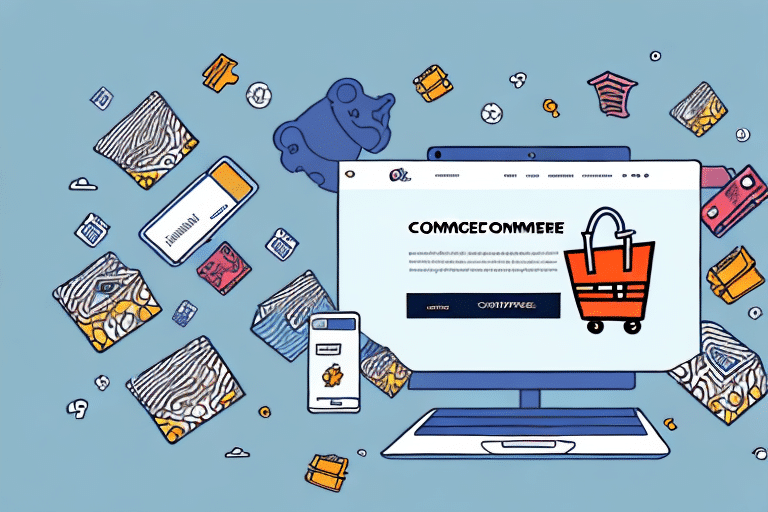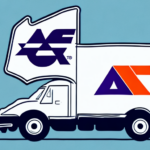5 Types of Promotions for E-Commerce Stores
As an e-commerce store owner, one of your primary goals is to drive sales and revenue. One of the most effective ways to achieve this is by offering promotions. Promotions not only encourage customers to make a purchase but can also attract new customers and build customer loyalty. In this article, we will explore various types of promotions e-commerce stores can use to drive sales and boost revenue.
Understanding Promotions: Definition and Importance for E-Commerce Stores
A promotion is a marketing strategy that offers a discount, deal, or incentive to encourage customers to make a purchase. According to Business News Daily, promotions are essential for e-commerce stores because they help drive sales and revenue. Additionally, promotions can help your store stand out from competitors and build lasting customer loyalty.
Common Types of Promotions
One of the most popular types of promotions is the "buy one, get one" (BOGO) deal. This type of promotion encourages customers to purchase more items by offering a free or discounted item with their purchase. Another effective promotion is the use of coupon codes, which can be distributed through email marketing or social media campaigns. These codes offer customers a discount on their purchase, incentivizing them to make a purchase they might otherwise forego.
It's important to use promotions strategically and not rely on them too heavily. Overuse of promotions can lead to customers only making purchases when a deal is available, potentially hurting your bottom line in the long run. Additionally, promotions should be targeted towards specific customer segments and timed appropriately to maximize their effectiveness.
The Role of Promotions in Boosting Sales for E-Commerce Stores
Promotions play a vital role in boosting sales for e-commerce stores. By offering discounts or other incentives, you can motivate customers to make a purchase. Additionally, promotions can increase the average order value and encourage customers to buy more items or higher-priced products.
Furthermore, promotions can help attract new customers. For example, offering a discount or free shipping to first-time buyers can entice them to try your products and become loyal customers. This strategy can also help you stand out from competitors and increase your market share.
However, it's crucial to use promotions strategically and not become overly reliant on them. Overuse of promotions can lead to customers expecting discounts and may adversely affect your profit margins. Striking a balance between offering promotions and maintaining a profitable business model is essential.
Creating an Effective Promotion Strategy for Your E-Commerce Store
When crafting a promotion strategy for your e-commerce store, it's important to consider your target audience and business goals. Here are the key steps:
Define Your Objectives
Determine what you aim to achieve with your promotions, whether it's increasing sales, attracting new customers, or boosting customer loyalty.
Understand Your Target Audience
Identify what types of promotions will resonate with your target customers, such as discounts, free shipping, or loyalty rewards.
Analyze Competitor Promotions
Review your competitors' promotions to understand what works well in your industry and find opportunities to differentiate your offerings.
Set Promotion Timing and Duration
Plan the timing and duration of your promotions carefully to align with sales cycles, holidays, or product launches.
Measure Success with Clear Goals and Metrics
Establish clear goals and use metrics such as conversion rates, average order value, and customer acquisition costs to evaluate the success of your promotions.
Types of Promotions That Work Best for E-Commerce Stores
There are several types of promotions that have proven effective for e-commerce stores:
- Discount Promotions: Offering percentage or dollar amount discounts on products or orders.
- Free Shipping Promotions: Providing free shipping to reduce barriers to purchase.
- Buy-One-Get-One (BOGO) Promotions: Encouraging customers to purchase more by offering additional products for free or at a discount.
- Loyalty Programs: Rewarding repeat customers with exclusive discounts or perks.
- Influencer Marketing Promotions: Partnering with influencers to reach a larger audience.
- Social Media Promotions: Utilizing social media platforms to promote deals and engage with customers.
Each of these promotions has its unique benefits and drawbacks. It is essential to consider your business goals and target audience when selecting which type of promotion to use.
Discount Promotions
Discount promotions are a popular choice for e-commerce stores as they encourage customers to make a purchase by offering a percentage or dollar amount off the total price. According to a Statista report, approximately 80% of consumers use coupons when shopping online.
Free Shipping Promotions
Free shipping promotions can be effective as customers are often deterred by high shipping costs. A study by Shopify indicates that free shipping is a significant factor influencing online purchase decisions, with over 70% of consumers citing it as a top priority.
Buy-One-Get-One (BOGO) Promotions
BOGO promotions can increase sales by incentivizing customers to purchase more items. Research shows that these offers can lead to a 30% increase in sales volume.
Loyalty Programs
Loyalty programs help retain customers by offering rewards for repeat purchases. According to Forbes, customers enrolled in loyalty programs are more likely to spend more and remain loyal to a brand.
Influencer Marketing Promotions
Influencer marketing involves partnering with social media influencers to promote your products to their followers. According to a Influencer Marketing Hub, businesses earn an average of $5.20 for every $1 invested in influencer marketing.
Social Media Promotions
Social media promotions can be a cost-effective way to reach a large audience and generate buzz around your brand. Platforms like Instagram, Facebook, and Twitter offer various tools to run targeted promotional campaigns.
Discount Promotions: How to Offer Discounts Without Hurting Your Bottom Line
Discount promotions are one of the most common types of promotions used by e-commerce stores. While discounts can effectively encourage customers to make a purchase, it's crucial to ensure that the discounts don't hurt your bottom line. Here are strategies to offer discounts without compromising your profits:
- Set Minimum Purchase Requirements: Encourage larger orders by requiring a minimum purchase amount to qualify for a discount.
- Limit Discount Percentages: Avoid excessive discounts that erode profit margins by capping the maximum discount percentage.
- Use Time-Limited Discounts: Create urgency by offering discounts for a limited time.
- Target Specific Products: Apply discounts to specific products that need a sales boost or have higher profit margins.
Free Shipping Promotions: Pros and Cons for E-Commerce Stores
Free shipping promotions are another popular type of promotion used by e-commerce stores. They can help increase conversion rates and encourage customers to buy more items. However, free shipping promotions can also be costly for e-commerce stores, especially for small or low-profit margin items.
To make free shipping promotions work for your e-commerce store, consider the following strategies:
- Set Minimum Purchase Amounts: Require customers to spend a certain amount to qualify for free shipping.
- Offer Free Shipping on Specific Products: Apply free shipping to select products to manage costs.
- Negotiate Shipping Rates: Work with carriers to secure better shipping rates and reduce costs.
Another factor to consider is the impact on your bottom line. While free shipping can attract more customers and increase sales, it can also eat into your profits. To mitigate this, consider adjusting your pricing strategy or finding ways to reduce shipping costs, such as using more cost-effective packaging materials. It's crucial to weigh the pros and cons of free shipping promotions and determine if they align with your overall business goals and budget.
Buy-One-Get-One (BOGO) Promotions: How to Use Them to Increase Sales and Revenue
Buy-one-get-one (BOGO) promotions offer customers a free or discounted item when they purchase a specific product. BOGO promotions can be an effective way to encourage customers to buy more than one item or to clear excess inventory.
To make BOGO promotions work for your e-commerce store:
- Ensure Value: Provide a free item of equal or lesser value to ensure customer satisfaction without significantly affecting profits.
- Clear Communication: Clearly communicate the promotion details to avoid confusion and enhance customer trust.
- Incorporate as Rewards: Use BOGO promotions as rewards for customer loyalty, encouraging repeat purchases.
It's essential to track the success of your BOGO promotions by monitoring sales during the promotion period and comparing them to sales during non-promotion periods. Additionally, gather customer feedback to assess how the promotion influenced purchasing decisions. This information can help refine future BOGO promotions for better effectiveness.
Loyalty Programs: The Ultimate Guide for E-Commerce Stores
Loyalty programs are a type of promotion designed to reward loyal customers. They can help increase customer retention and encourage repeat purchases, which are essential for long-term business growth.
To implement effective loyalty programs:
- Offer Exclusive Rewards: Provide exclusive discounts or rewards to incentivize customers to remain loyal.
- Implement Tiered Rewards: Create tiered levels where customers receive better perks as they spend more or make more purchases. This strategy encourages customers to increase their spending to reach higher tiers.
- Clear Earning and Redemption Guidelines: Ensure customers understand how to earn and redeem rewards easily.
- Regular Promotion: Promote the loyalty program regularly through various channels to keep customers engaged.
According to Help Scout, companies that excel in customer loyalty see a 5-10% increase in revenue. Additionally, loyalty program members are typically more likely to make repeat purchases and provide valuable feedback for continuous improvement.
Influencer Marketing as a Promotional Tool for E-Commerce Stores
Influencer marketing promotions involve partnering with social media influencers to promote your e-commerce store and products. This strategy can help increase brand awareness and attract new customers by leveraging the influencer's established audience.
To effectively use influencer marketing:
- Partner with Relevant Influencers: Choose influencers whose audience aligns with your target market to ensure your promotions reach potential customers.
- Authentic Collaborations: Ensure that the promotion feels genuine and aligns with the influencer's content style to increase trust and engagement.
- Clear Disclosure: Ensure that the promotion is clearly disclosed to the influencer's followers in compliance with advertising regulations.
Studies show that influencer marketing can yield significant returns. For instance, a survey found that businesses earn an average of $5.20 for every $1 spent on influencer marketing.
Social Media Promotions: Tips and Tricks for Successful Campaigns
Social media promotions involve promoting your e-commerce store on platforms such as Facebook, Instagram, and Twitter. These promotions can help increase brand awareness, drive website traffic, and attract new customers.
To make social media promotions effective:
- Create Engaging Content: Develop content that resonates with your audience, such as compelling visuals, informative videos, or interactive posts.
- Use Relevant Hashtags: Utilize hashtags that are relevant to your products and target audience to increase the visibility of your posts.
- Leverage Paid Advertising: Use paid social media advertising to target specific demographics and reach a larger audience.
- Partner with Influencers: Collaborate with influencers to expand your reach and credibility.
According to Statista, over 3.6 billion people use social media worldwide, making it a powerful platform for promoting your e-commerce store.
Creating Urgency with Limited-Time Offers and Flash Sales
Limited-time offers and flash sales are promotions with a set duration, typically 24-48 hours. They can create a sense of urgency among customers and encourage them to make a purchase before the promotion expires.
To effectively implement limited-time offers and flash sales:
- Clear Communication: Clearly communicate the promotion's duration to prevent customer confusion.
- Set Purchase Limits: Consider setting a limit on the number of items available at the discounted price to enhance urgency.
- Promote Heavily: Use multiple channels, such as email marketing, social media, and your website, to promote the flash sale.
These promotions can significantly boost sales in a short period. According to BigCommerce, flash sales can increase revenue by up to 35% during the promotion period.
Referral Programs: How to Turn Customers into Advocates and Drive Sales
Referral programs involve incentivizing customers to refer their friends and family to your e-commerce store. These programs can help increase brand awareness, attract new customers, and drive sales through word-of-mouth marketing.
To create effective referral programs:
- Offer Relevant Rewards: Provide rewards that are appealing to both the referrer and the new customer, such as discounts, free products, or store credits.
- Simplify the Referral Process: Make it easy for customers to refer others by providing simple referral links or sharing options.
- Promote the Program: Regularly promote the referral program through email campaigns, social media, and on your website.
According to a ReferralCandy study, referred customers are 18% more loyal than non-referred customers and can generate up to 16% more revenue.
Measuring the Success of Your Promotion Strategy: Key Metrics to Track
To determine the success of your promotion strategy, it's important to track key metrics. These metrics help you understand what's working and where improvements are needed.
Key metrics to track include:
- Conversion Rate: The percentage of visitors who make a purchase after viewing a promotion.
- Average Order Value (AOV): The average amount spent per customer per order.
- Customer Retention Rate: The rate at which customers make repeat purchases.
- Customer Acquisition Cost (CAC): The cost associated with acquiring a new customer through promotions.
- Return on Investment (ROI): The financial return generated from your promotional activities compared to their cost.
Additionally, consider analyzing customer feedback and engagement metrics to evaluate the effectiveness of your promotions and make necessary adjustments to your strategy.
Common Pitfalls to Avoid When Running Promotions on Your E-Commerce Store
When running promotions on your e-commerce store, it's essential to avoid common pitfalls that can undermine your efforts. Here are some key mistakes to avoid:
- Offering Excessive Discounts: Discounts that are too steep can erode your profit margins and devalue your products.
- Poor Communication: Failing to clearly communicate the details of your promotion can lead to customer confusion and frustration.
- Ignoring Analytics: Not tracking the performance of your promotions makes it difficult to understand their impact and improve future campaigns.
- Overusing Promotions: Relying too heavily on promotions can train customers to wait for deals, reducing the effectiveness of your marketing efforts.
To ensure the success of your promotion strategy, take the time to plan and execute promotions effectively and invest in the necessary tools and resources to track and analyze your promotions' success.
Overall, promotions are an essential tool for e-commerce stores. By offering discounts, free shipping, loyalty programs, and other incentives, you can attract new customers, increase sales, and build customer loyalty. When creating a promotion strategy for your e-commerce store, consider your business goals and target audience and choose the type of promotion that will resonate best with your customers.






















